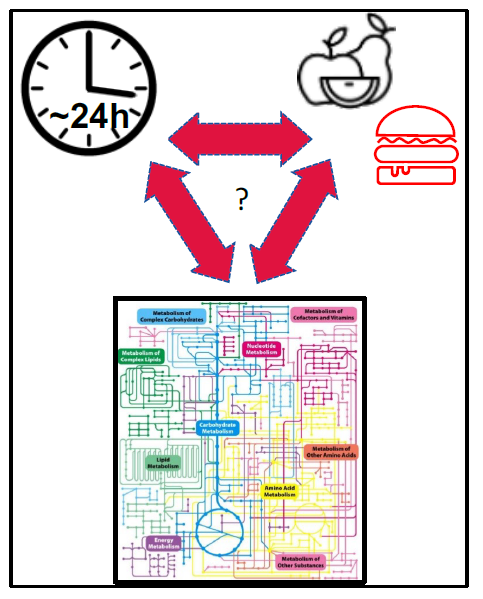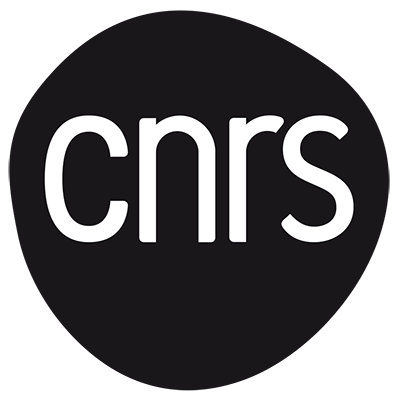Circadian Metabolism
Daniel Mauvoisin
Investigator : Daniel MauvoisinModern lifestyle has led to a surge of chronic non-communicable diseases and exposure to circadian disruptors like irregular sleep patterns or dietary intake constitute a new risk factor for overweight and metabolic complications. Hence, the notion that "It’s not just what you eat and how much you eat, but also when you eat that matters" has gained some interest in the lay public. However, this has not yet served to better treat metabolic diseases. To communicate this message to clinicians and patients, we seek to elucidate the underlying molecular determinants. This is critical to integrate growing knowledge about the impact of circadian rhythm on metabolism as part of a healthy lifestyle to improve human health.
The circadian clock is a hierarchical regulatory network central in metabolic regulation. Its dysfunction is linked with a broad range of pathologies including type 2 diabetes and obesity. This molecular endogenous oscillator regulates circadian/diurnal metabolism via many regulatory steps ranging from transcription to post-translational modifications. At the cellular level, the circadian clock also exerts a control on subcellular structures dynamics such as daily mitochondrial network rhythms to safeguard metabolic homeostasis. Consequently, the repertoire of clock output is extremely vast and notably include hormones, nutrient, redox sensor, and metabolites. These metabolic clock outputs can in turn, regulate the circadian clock by acting as an input signal (or zeitgeber). Indeed, feeding rhythms constitute a powerful zeitgeber and feeding related cues can also act as zeitgebers. While ad libitum high fat diets dampen feeding rhythms, feeding restricted to the active phase (night-time for the mouse model) prevent metabolic dysfunction and notably liver pathologies in diet induced obesity.
One of the major challenges in the circadian metabolic field is connecting the dots by characterizing the molecular cogs by which feeding schedule influence circadian/diurnal metabolism. An outstanding question is whether overnutrition, a known circadian disruptor, triggers metabolic diseases through perturbing the rhythmicity of metabolic related post-translational modifications and/or altered mitochondrial metabolic rhythms?

Changes in Key Mitochondrial Lipids Accompany Mitochondrial Dysfunction and Oxidative Stress in NAFLD. Durand, M., M. Coue, M. Croyal, T. Moyon, A. Tesse, F. Atger, K. Ouguerram and D. Jacobi (2021). Oxid Med Cell Longev 2021: 9986299.
Circadian and Feeding Rhythms Orchestrate the Diurnal Liver Acetylome. Mauvoisin, D., F. Atger, L. Dayon, A. Núñez Galindo, J. Wang, E. Martin, L. Da Silva, I. Montoliu, S. Collino, F.-P. Martin, J. Ratajczak, C. Cantó, M. Kussmann, F. Naef and F. Gachon (2017).Cell Reports 20(7): 1729-1743.
Diurnal Oscillations in Liver Mass and Cell Size Accompany Ribosome Assembly Cycles. Sinturel, F., A. Gerber*, D. Mauvoisin*, J. Wang, D. Gatfield, J. J. Stubblefield, C. B. Green, F. Gachon and U. Schibler (2017). Cell 169(4): 651-663.e614.
Nuclear Proteomics Uncovers Diurnal Regulatory Landscapes in Mouse Liver. Wang, J.*, D. Mauvoisin*, E. Martin, F. Atger, A. N. Galindo, L. Dayon, F. Sizzano, A. Palini, M. Kussmann, P. Waridel, M. Quadroni, V. Dulić, F. Naef and F. Gachon (2017). Cell Metab 25(1): 102-117.
Hepatic Bmal1 Regulates Rhythmic Mitochondrial Dynamics and Promotes Metabolic Fitness. Jacobi, D.*, S. Liu*, K. Burkewitz, N. Kory, N. H. Knudsen, R. K. Alexander, U. Unluturk, X. Li, X. Kong, A. L. Hyde, M. R. Gangl, W. B. Mair and C. H. Lee (2015). Cell Metab 22(4): 709-720.
Funding
- Fondation Genavie
- NEXt/ Région Pays de la Loire
- PULSAR
- NSFA
- FHU GO NASH
- FC3R











